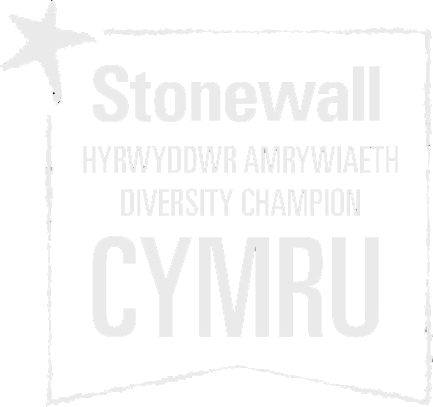- One of the principles behind funder expectations is that ‘funded research data is a public good produced in the public interest and should be made freely and openly available with as few restrictions as possible in a timely and responsible manner.’ A simple direction to interested parties to “contact the author” would not normally be considered sufficient. Decisions about data archiving, preservation and possible future sharing of data need to be made.
- In the context of research data management, ‘metadata’ is the contextual information about the data that will help others to find and understand it. This will usually include information such as ‘who created the data’, ‘what is the data about’, ‘are there any restrictions regarding who can use the data and in what circumstances’, and so forth. Different disciplines will generally find different metadata fields useful. Library catalogues are essentially catalogues of metadata. In some disciplines research publications are often the richest source of information about how a particular dataset was derived, so it is important to link articles to data. In others it may be necessary to develop additional documentation about how the data was collected, organised and used.
- Probably not. If data has been generated as a result of running software code, then it may be helpful to provide a link to that code in the metadata, but the software itself would not constitute data in most situations.
- If the software is essential to validating the research findings then adequate information should be provided to enable its re-running by third parties. This may involve taking additional steps to preserve the software in addition to the data itself.
- You may wish to preserve your code (and in some instances the environment in which it was run) in order to adhere to the general spirit of making research more widely available. In this instance consider asking the data creators to deposit their data in an appropriate repository that will assign a Digital Object Identifier (DOI) to the data, so that you can then reference it. Thesoftware Sustainability Institutemay be of interest.
- The university will support researchers in meeting funder (ESRC, EPSRC, MRC etc.) expectations or requirements via advice and guidance. It offers services and infrastructure to support various aspects of research data management. Enquiries relating to research data management should be directed to RIES where they will be reviewed and addressed by a cross-departmental team of staff from IT Services, the Library, and research development officers.
- Such questionnaires will usually seek reassurances about the security of the computing facilities and infrastructure that you will be using. There may be restrictions regarding where you can access the sensitive data, such as a requirement that you must be within the physical University department in which you are based (and therefore behind appropriate firewalls) or that you will only ever access the data from a specific computer terminal. If this is the case then IT support staff will probably need to answer many of the technical questions relating to infrastructure and storage, including the set-up of the computers, how they are maintained, and how they connect to the rest of the University and ultimately the outside world.
- An extensive directory of data repositories is available fromre3data. These range from very generic commercially-provided repositories such as Figshare, to narrowly-defined subject-specific repositories. Generally speaking, it’s better to use a subject-specific repository than a generic one, as they will have staff that understand the data and can help curate it properly as time passes.
- Some repositories request that the data they receive is accompanied by metadata (contextual information about the data) in a particular format, so it’s worth getting in touch with appropriate repositories before you get too far in to the data gathering process. It’s much easier to document your data as you gather it rather than leaving it until the end of a project – and documenting data during a project can also help you and any collaborators find relevant information more quickly whilst you are still working on it.
- Unfortunately, subject-specific data repositories do not exist for many fields. If there is no appropriate disciplinary repositories for your data, you can meet funder requirements by depositing it in UWTSD’s institutional data repository.
- Even if you deposit your data to an external data repository, you should still create a record for it in UWTSD’s institutional data repository, so that the University can keep track of research outputs. This is increasingly expected by research funders, and can help with the assessment of impact.
- UWTSD runs its own data repository. This does not however mean that all research data you wish to preserve should go into UWTSD data repository. If there is a specialist data repository for your discipline, you should under normal circumstances deposit your research data there. You can find out more information about specialist data repositories fromhttp://www.re3data.org/.
- You should ONLY deposit your data in the UWTSD data repository if there is no more appropriate specialized data repository in your field. You should however create a record for your data in UWTSD data repository even if you deposit the data itself elsewhere. This helps the University know what and where it is in the event of an audit, but it also improves the visibility of your data, as UWTSD data repository records are indexed by search engines such as Google.
- You may wish to deposit your data in a general data repository such as Dryad or Zenodo, or a commercially-provided alternative such as FigShare. These may be convenient, but there are reasons why these are not advised as alternatives to specialist repositories or ORA-Data for data underlying published research conclusions:
- The UWTSD data repository, and to some degree specialist repositories, are likely to have better longevity than free generalist (and/or) commercial repositories.
- The UWTSD data repository and specialist repositories are likely to be able to offer a better level of post-deposit curation in the future than free services (things like format migrations and integrity checking).
- The UWTSD data repository and (most) specialist repositories include a metadata review to ensure that minimum standards are met.
- With The UWTSD data repository the data will be held within a secure environment, so there are no concerns about legal jurisdictions; specialist repositories may be based outside of the UK, but usually make their terms and conditions very clear.
- Commercial and free services may lack strong long-term business models. Check their terms and conditions to see what will happen to your data should things turn sour.
- Finally, some journal publishers accept data deposits alongside the articles they publish. If depositing in a publisher’s data repository, check that the terms and conditions meet your funder’s minimum expectations, and create a record in the UWTSD data repository
- 尽可能的资助者预计数据存档。This does not necessarily mean it will always be shared publicly or without restrictions. In such cases it is recommended you produce a publicly-accessible record of your research data in the UWTSD data repository. The record for the data should indicate why access to the data is restricted or not possible. For example, Expectation vi from the EPSRC guidelines on archiving and sharing data states: “Where access to the data is restricted the published metadata should also give the reason and summarize the conditions which must be satisfied for access to be granted. For example ‘commercially confidential’ data, in which a business organization has a legitimate interest, might be made available to others subject to a suitable legally enforceable non-disclosure agreement.”
- 大多数数据存储库将分配一个唯一的一致格fier, most commonly a Digital Object Identifier, when you deposit you data with them.
- Most of the major funding bodies provide a data management plan (DMP) template as well as guidance for completing the plan. You can find summary information about funders’ DMP requirements at the theDigital Curation Centre website. Before going any further, visit your funder’s website to ensure you are referring to the latest versions of the template and guidelines where available.
- The Digital Curation Centre offers a useful web service for completing DMPs: theDMP Online Tool. This presents the technical plan template as an online form, alongside guidance and tips for completing each entry from both the funder and the University (where such advice is available).
- If you would like more detailed advice as to what to include in a DMP, arrange to meet with RIES.
- There is a certain minimum amount of information about your data (metadata) that is required to ensure it can be properly cited: the names of those responsible for creating the data; a title; a publisher; and the publication year. This will generally be required during the data deposit process, along with information about how and why the data was generated. Most data repositories have a form to fill out when depositing data, and it is a good idea to see what information they ask for before you get too far into a project.
- It is always sensible to add some documentation to a dataset whilst you are still working on it – explain abbreviations, and add notes about data that seem odd or which may cause confusion to those not involved in generating the data. Not only will this assist researchers who may wish to look at the data in future, but it will also help you and other members of your team to understand it if you need to revisit it yourself in a year or two’s time.
- You do not need to deposit existing data or that belonging to a third party unless you have materially altered or added to it. If you have substantially altered the data – and this includes restructuring it so as to enable analysis – then whether you can or should deposit it will depend largely on the intellectual property (IP) rights invested in the data and the licence it was published under (if applicable). Unless it is clear that you have the right to publish the data in its modified form, contact RIES for further advice.

Adapted from the University of Oxford underCreative Commons Attribution 3.0 Unported licence(CC BY 3.0). Original content at:http://researchdata.ox.ac.uk/
chat loading...







